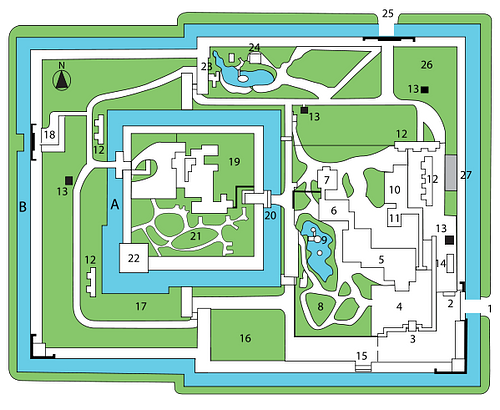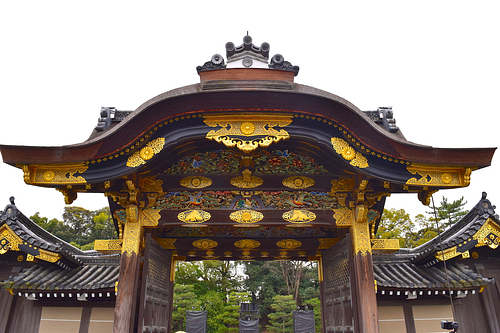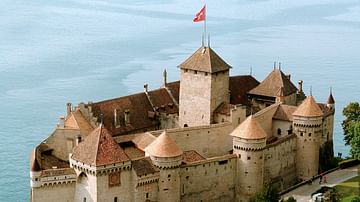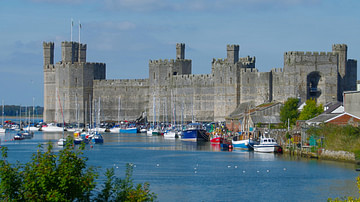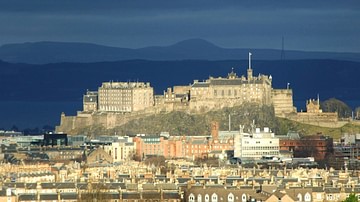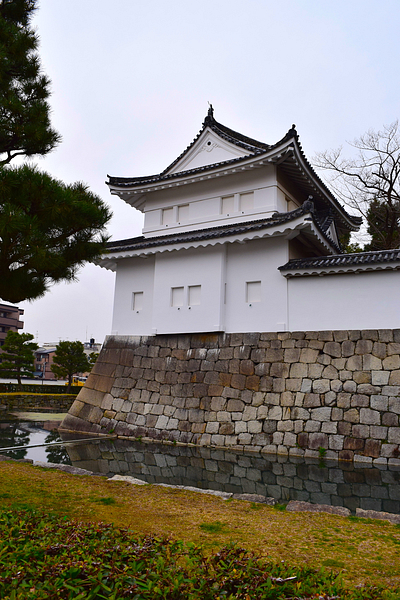
Nijo Castle, located in Kyoto, Japan, was first built in 1603 CE by Tokugawa Ieyasu (r. 1603-1605 CE), founder of the Tokugawa Shogunate (1603-1868 CE). The castle complex is surrounded by a double moat and made up of three distinct areas: the Ninomaru Palace (1626 CE), the Honmaru compound (1847 CE), and the castle's two gardens. The castle contains 3,000 examples of medieval paintings, nearly 1,000 of which are classified as Important Cultural Properties. Nijo Castle is listed by UNESCO as a World Heritage Site and six of its buildings are recognised as official National Treasures of Japan.
The Tokugawa Shoguns
Tokugawa Ieyasu of the Matsudaira family established himself as military supremo of Japan after winning the 1600 CE Battle of Skeigahara against those generals who supported the son and heir of Toyotomi Hideyoshi (r. 1582-1598 CE). Ieyasu took the title of shogun in 1603 CE and thus established the Tokugawa Shogunate that finally brought the complete unification of Japan which then enjoyed some 250 years of peace. It was Ieyasu who had Nijo Castle built from 1603 CE to be used as the shogun's base in Kyoto and a handy presence near the imperial palace. At that time Edo (Tokyo) was the capital and seat of the shogunate and so Nijo housed a permanent senior governor while shoguns only used the castle when they were on official visits.
The Ninomaru Palace was added to the site in 1626 CE by the shogun Tokugawa Iemitsu (r. 1623-1651 CE), the grandson of Ieyasu. Iemitsu also moved many art objects from Fushimi Castle, the former residence of Toyotomi Hideyoshi, to the site and even several buildings, most impressive of which was the Karamon Gate and a five-storey tower. Unfortunately, the tower burnt down after a lightning strike in 1750 CE and was never replaced, but its lower steps still remain in situ. The other surviving medieval structures are, nevertheless, excellent examples of the architecture of the Azuchi-Momoyama period (1568-1600 CE).
Design & Features
Nijo Castle has a ground plan which takes the form of two concentric circles with an outer and an inner water-filled moat. The whole complex is surrounded by masonry walls and covers an area of around 500 by 400 metres (1640 x 1312 ft). A bridge crossing the inner moat connects the Ninomaru Palace, the shogun's residence and audience area, with the Honmaru enclosure and Katsura Palace. The latter building, which dates to 1847 CE and which replaced an earlier version that had been destroyed by a fire in 1788 CE, once belonged to the gardens of the Imperial Palace but was donated to the site by Yoshihito, Prince Katsura (1948-2014 CE). The southeast corner of the Katsura Palace walls has a multi-storey castle keep typical of Japanese medieval castles.
Ninomaru Palace
The Karamon Gate, originally set up at Fushimi Castle, is built in the Chinese style with carvings of auspicious symbols and plenty of gilded brackets; and it has a curved roof covered in cypress bark shingles. This impressive gate provides a suitable main entrance to the Ninomaru Palace.
The Ninomaru Palace consists of five individual buildings interconnected via corridors. They are fine examples of the traditional residential architecture of Japan, known as shoin-zukuri, and employ mostly hinoki cypress wood. Seen from above, the five structures present a staggered diagonal. The palace covers a total floor space of 800 tatami mats and has a total of 33 rooms, all lavishly decorated with landscape paintings produced by a team of artists supervised by the celebrated painter Kano Tanyu (1602-1674 CE). Most of the 3,000 paintings on display today are replicas, but 954 of the originals are recognised as official Important Cultural Properties of Japan. Their subjects are all brightly coloured and are mostly of landscapes and birds such as pine forests in snow, cherry, and plum trees in full blossom, tigers in bamboo groves, peacocks, and pheasants.
Walking around the palace, visitors will immediately notice the creaking floorboards, but these were laid intentionally, a common feature of Japanese medieval castles and designed to alert the inhabitants of any intruders, especially ninja assassins. Called a Nightingale Floor (uguisu bari), the effect is achieved via hundreds of pins set under the floorboards.
The rooms of the palace had specific functions such as the four reception rooms for outside visitors where one's rank and one's desired interlocutor determined which room one was permitted to enter. The differences in status, in rising importance, were: imperial messengers, feudal lords who wished to see a minister of the shogunate, senior feudal lords who wanted to speak with the shogun, and the long-time allies of the shogun. Other rooms functioned as the private residence of the shogun (the Shiro Shoin building and the last of the five to be reached) which no one could enter except female attendants, as well as rooms for ministerial offices, a guardhouse, rice store, and kitchens.
Gardens
The Ninomaru Palace has adjoining gardens on the eastern side, the Ninomaru gardens, which were designed by the celebrated landscape gardener Kobori Enshu (1579-1647 CE). The garden was established in 1626 CE for the visit of Emperor Go-Mizunoo (r. 1611-1629 CE). Again, there is a Chinese influence with a small carp pond having a larger central island - representing Eternal Happiness - and two smaller islands each representing a crane and turtle, both symbols of good fortune. There are also rock gardens and a three-tiered waterfall running into the pond. Curiously treeless along one bank, the pond and garden is perhaps a little austere, possibly an intentional effect for the home of a military ruler. The Ninomaru gardens were recognised as an official Special Scenic Beauty Site of Japan in 1953 CE.
A second garden runs along the north side of the two palaces, the Seiryu-en Garden. Laid out in 1965 CE, the garden has two teahouses, the Koun-tei and Waraku-an, purpose-built for the Japanese Tea Ceremony, and they are often used for official government events. The garden boasts over 1,000 specially selected rocks carefully placed along the edges of the water feature.
Later History
In 1867 CE the last Tokugawa shogun, Tokugawa Yoshinobu (r. 1867-1868 CE), ceded the castle to the emperor of Japan. The 1868 CE Meiji Restoration then saw the restoration of the powers of the emperors and an end to the shoguns. This act was carried out in a ceremony in the main hall of the castle's Ninomaru Palace and was witnessed by all the important feudal lords of Japan.
In 1939 CE the castle was donated to the city of Kyoto by the imperial family, and it then acquired its present name of Nijo-jo or Nijo Castle. In 1994 CE, Nijo Castle was listed by UNESCO as a World Heritage Site. In 2005 CE, to celebrate the castle's 400th anniversary, a new building was added, the Anniversary Gallery. Besides its history, art, and architecture, the site also attracts visitors every March and April for the magnificent blossoms of its 400 cherry trees which stand along the southern side of the castle complex.
This content was made possible with generous support from the Great Britain Sasakawa Foundation.
